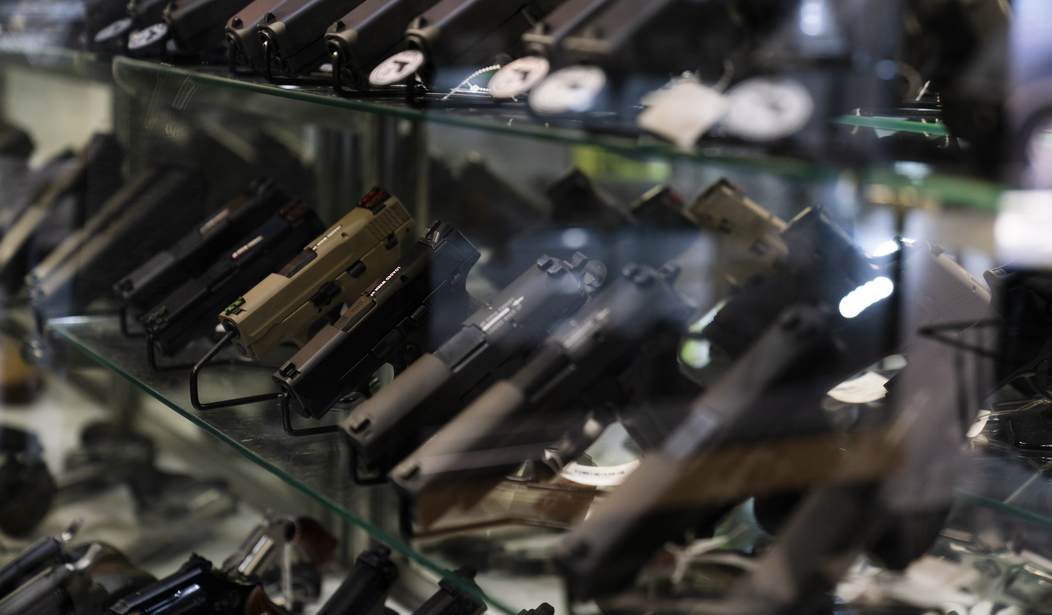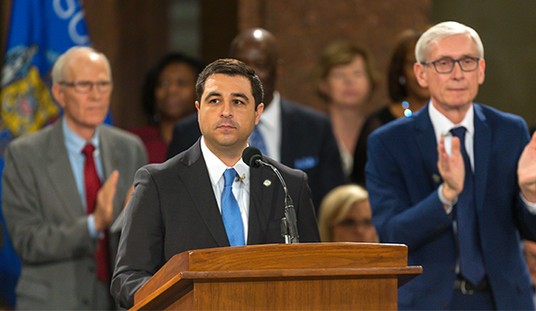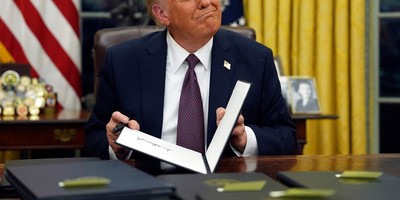Just add this to the list of systemic deficiencies plaguing the Federal Bureau of Investigation. Since 2016, there’s been what seems to be a never-ending list of scandals and corruption engulfing the J. Edgar Hoover Building. We’ve suffered through their Russian collusion circus. We saw federal agents run interference on any story about Hunter Biden’s laptop. They raided the home of Donald Trump at Mar-a-Lago, and they seem to have a disturbing track record regarding mass shooters—they always seem to know who these guys are beforehand. Also, they initially said that the 2017 GOP congressional baseball team shooting, which almost killed then-Majority Whip Steve Scalise (R-LA), was not politically motivated. The perpetrator was a devoted leftist and Bernie Sanders supporter who scoped out the practice location in Alexandria, Virginia, for days and had a hit list of GOP targets.
Is this the biggest scandal to hit the FBI? No, but it has a considerable impact because it is a Second Amendment issue. The media has peddled narratives about how private citizens can’t stop active shooter situations, partially based on the FBI’s inaccurate data sets. The FBI is grossly undercounting or simply miscataloguing incidents in which citizens prevent would-be mass shooters. According to the Hoover boys, only four percent of active shooter situations are stopped by ordinary citizens when the actual number is closer to 35 percent. In 2021, the figure was around 50 percent. John Lott’s Crime Prevention Research Center crunched the exact figures in their new study, which also added that the FBI misclassified shooting incidents when a civilian stopped the attacker because the police later arrested the suspect (via CPRC):
The FBI reports that armed citizens only stopped 11 of the 252 active shooter incidents it identified for the period 2014-2021. The FBI defines active shooter incidents as those in which an individual actively kills or attempts to kill people in a populated, public area. But it does not include those it deems related to other criminal activity, such as a robbery or fighting over drug turf.
An analysis by my organization identified a total of 360 active shooter incidents during that period and found that an armed citizen stopped 124. A previous report looked at only instances when armed civilians stopped what likely would have been mass public shootings. There were another 24 cases that we didn’t include where armed civilians stopped armed attacks, but the suspect didn’t fire his gun. Those cases are excluded from our calculations, though it could be argued that a civilian also stopped what likely could have been an active shooting event.
The FBI reported that armed citizens thwarted 4.4% of active shooter incidents, while the CPRC found 34.4%.
Two factors explain this discrepancy – one, misclassified shootings; and two, overlooked incidents. Regarding the former, the CPRC determined that the FBI reports had misclassified five shootings: In two incidents, the Bureau notes in its detailed write-up that citizens possessing valid firearms permits confronted the shooters and caused them to flee the scene. However, the FBI did not list these cases as being stopped by armed citizens because police later apprehended the attackers. In two other incidents, the FBI misidentified armed civilians as armed security personnel. Finally, the FBI failed to mention citizen engagement in one incident.
For example, the Bureau’s report about the Dec. 29, 2019 attack on the West Freeway Church of Christ in White Settlement, Texas, that left two men dead does not list this as an incident of “civic engagement.” Instead, the FBI lists this attack as being stopped by a security guard. A parishioner, who had volunteered to provide security during worship, fatally shot the perpetrator. That man, Jack Wilson, told Dr. John Lott that he was not a security professional. He said that 19 to 20 members of the congregation were armed that day, and they didn’t even keep track of who was carrying a concealed weapon.
As for the second factor — overlooked cases — the FBI, more significantly, missed 25 incidents identified by CPRC where what would likely have been a mass public shooting was thwarted by armed civilians. There were another 83 active shooting incidents that they missed.
There is no reason to think that the news media covers all the cases where civilians stopped attacks. And the farther back in time we go, the more cases we are likely to miss. The next table illustrates this bias. Using the 2014 to 2021 data clearly shows that 49.1% of active shooting attacks were stopped in 2021, 45.1% in 2020, and a declining percentage the farther back in time that we go.
[…]
The FBI’s active shooting reports do not mention whether the attacks occur in gun-free zones. “The issue is that when places are posted as gun-free zones, law-abiding citizens obey those rules and would be unable to stop the attacks in those areas,” notes Carl Moody, a professor at William & Mary and the CPRC’s research director.
[…]
All the experts interviewed by the Washington Post and New York Times argue that stopping these attacks should be left to the police. “I think you might get more individuals carrying, sort of primed for something to happen, which is particularly dangerous … in reality that’s the job of the police,” Indiana University Bloomington law professor Jody Madeira told the Washington Post.
But many in law enforcement disagree. In March 2013, PoliceOne surveyed its 380,000 active-duty and 70,000 retired law enforcement officer members. Eighty-six percent of members believed that casualties from mass public school shootings could be reduced or “avoided altogether” if citizens had carried permitted concealed handguns in those places. Seventy-seven percent supported “arming teachers and/or school administrators who volunteer to carry at their school.” No other policy to protect children and school staff had such widespread support.
Recommended
A few years ago, I would have been shocked to think that the FBI, our preeminent law enforcement and domestic intelligence agency, could fudge the numbers this poorly, but since Trump—their malfeasance knows no bounds. They’ve interfered in three elections now, one of which—2024—hasn’t even begun, but you don’t think Trump will use the Mar-a-Lago raid in some fashion to build the foundation for his pending candidacy announcement? The bureau has acted more like the political police force of the Democratic Party, so, sadly, I cannot simply pass this off as a flawed data formula.

























Join the conversation as a VIP Member